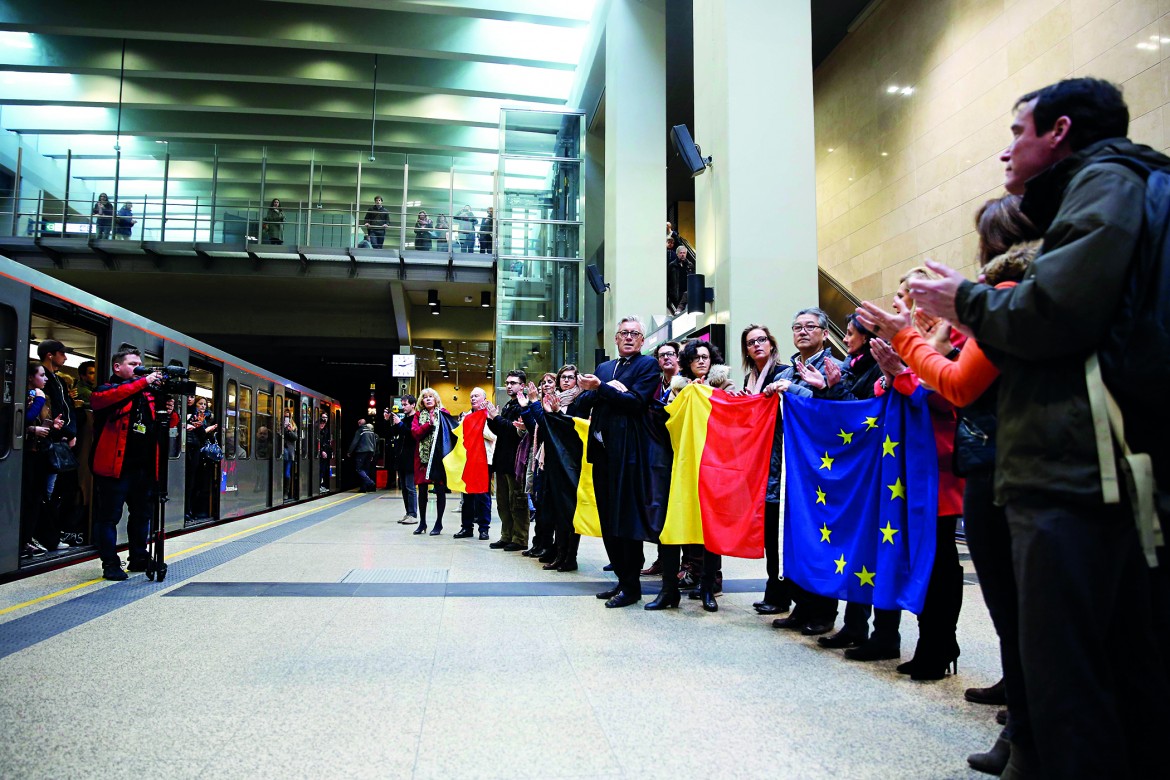Analysis
Blood, jihad and the mysteries of the Molenbeek cell
Belgium remains on alert for a terrorist attack one year after the attacks on the airport and subway in Brussels. Authorities still know very little about the Molenbeek cell one year later.

The Brussels bombings of March 22, 2016, were the last in a series of terrorist attacks carried out by a single jihadist cell and resulted in the deaths of 35 people. The same group has been credited with the attacks on the Jewish Museum in May 2014 in Brussels (four deaths) and in Paris in November 2015 (130 deaths).
This network is composed largely of young Europeans of North African origin fascinated by jihadist rhetoric within the ranks of the so-called Islamic State. For many of them, their radicalization came after taking a path of common delinquency. A coordinator of the group in Europe was Abdelhamid Abaaoud, born and raised in Molenbeek, killed by French police a few days after the Paris attacks of November 2015.
If the recent attacks on European soil are the work of individuals, radicalized on the Internet and carried out with unconventional weapons (as in the case of Nice, Berlin and Wednesday in London), those in Paris and Brussels were rather the work of a cell that enjoyed the support of an international terror network, able to mobilize personnel and equipment.
The investigations took off from the escape of Salah Abdeslam, the failed suicide bomber and lone surviving attacker at the Bataclan and in the Parisian streets. His unplanned return to Brussels sheds light on the jihadist cell, partly diminished by the Verviers operation (in the south of Belgium) at the beginning of 2015, in the days following the massacre at the editorial office of Charlie Hebdo. Detectives are therefore focusing on Brussels and in particular on the Molenbeek district.
Hunted by law enforcement, the jihadist cell members changed up their targets, retreating back on Brussels instead of hitting Paris again during European soccer. Their orders seem to arrive directly from Syria. Their captain, Abou Ahmad, whose real name is Osama Atar, is presumed to be the right arm of the Baghdadi, the caliph of the Islamic State. The story of this 32-year-old Belgian-Moroccan citizen, still wanted, is incredible. Released from the penitentiary of Abu Ghraib, in Iraq, thanks to a campaign against prison abuse promoted by Amnesty International and by left-wing Belgian parties, he returned to Belgium in 2012 before finally taking the road to Syria.
But the background of the other components of the cell is ambiguous. The Belgian Ibrahim El Bakraoui, one of the suicide bombers in the March 22 attacks, was wanted in Belgium for robbery and trafficking art. He was arrested in Turkey for his membership in the Islamic State, and subsequently expelled to the Netherlands with a last minute communication that prevented his custody (with the help of the Turkish authorities, according to some journalistic reconstructions).
It’s the same with El Bakraoui, along with Naijm Lacharaoui, the bomb maker of the cell. They received instructions from Abou Ahmad, the presumed number two of the Islamic State, for the planning of the kidnapping of a VIP in order to demand the release of Medhi Nemmouche, who was arrested as alleged author of the bombing of the Jewish Museum in Brussels in 2014. That plan was ultimately abandoned.
The arrest of Salah Abdeslam on March 18 in Molenbeek pushed the cell to move more quickly. On the morning of March 22, what remained of the jihadist cell attacked Zaventem airport and about an hour later Maelbeek Metro station. They killed 35 people and wounded 340, despite the improvised attack. Two of the four suicide bombers at Brussels airport exploded. Only one of the two subway suicide bombers detonated their devices, traveling along the subway line for about 20 minutes as though the blast site was pre-determined.
A year later, there are still so many questions: How was the network financed, and who was supporting it? Above all, are there still other members of the cell waiting to act, and where would they be hiding their weapons cache? That’s the lingering question that justifies Belgium’s alert level at three on a scale of four, indicating a chance of terrorist attacks as “serious and real.”
Originally published at https://ilmanifesto.it/sangue-jihad-e-misteri-della-cellula-di-molenbeek/ on 2017-03-23
